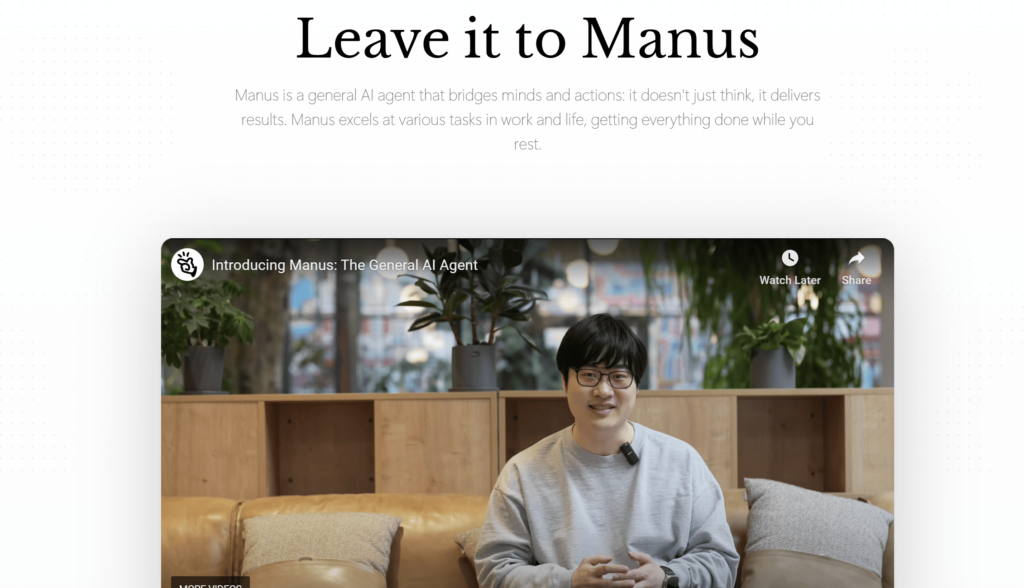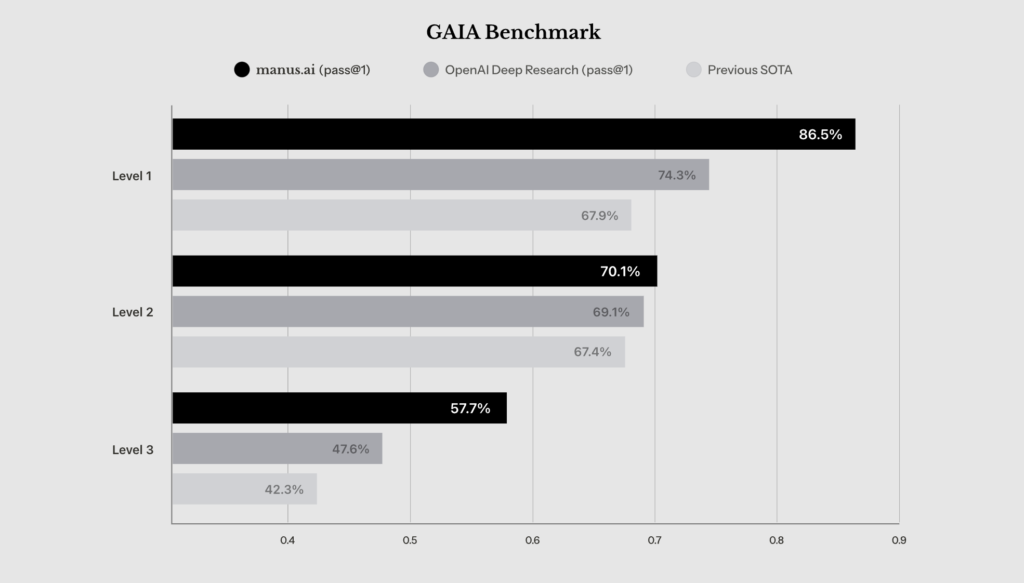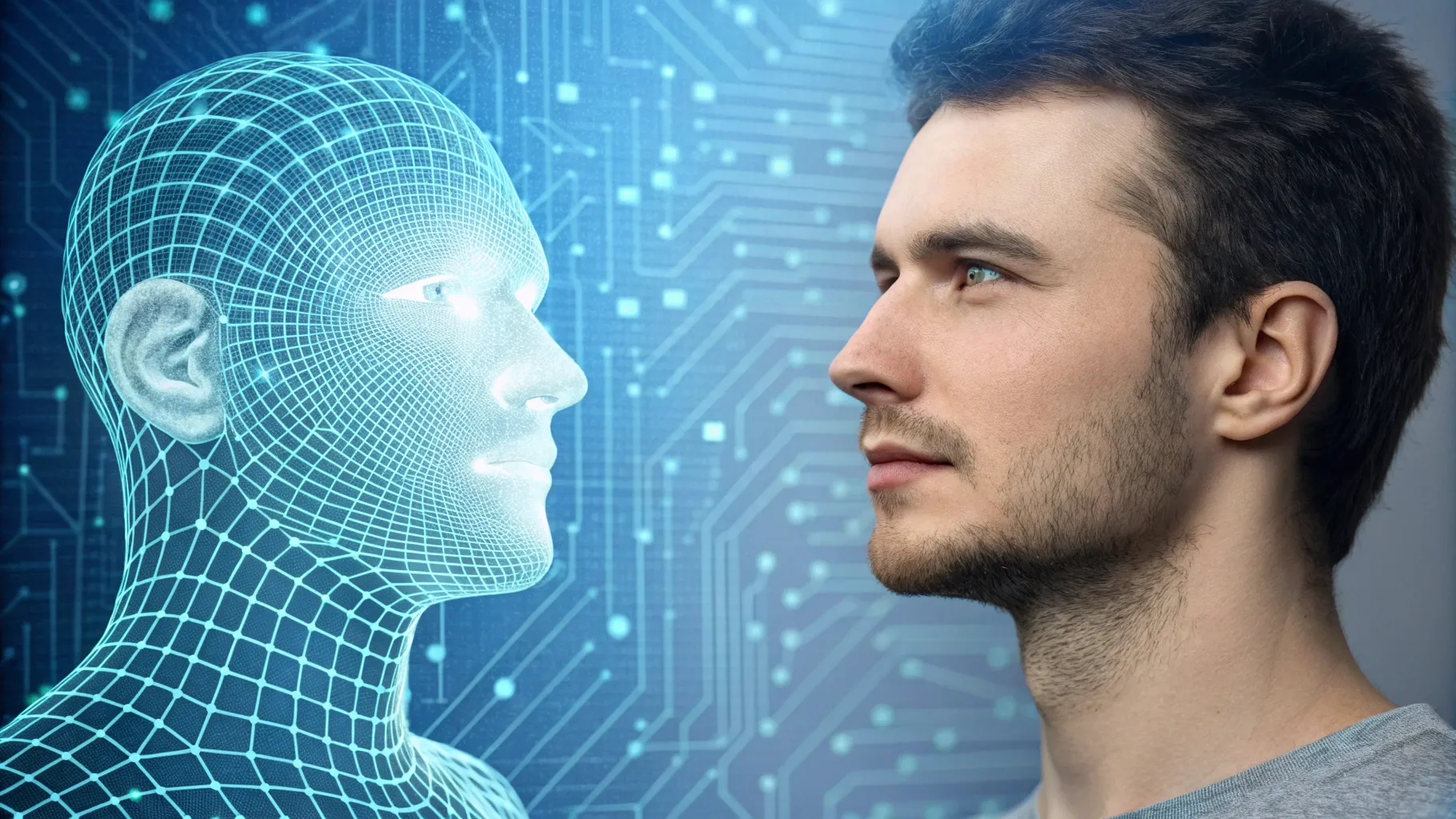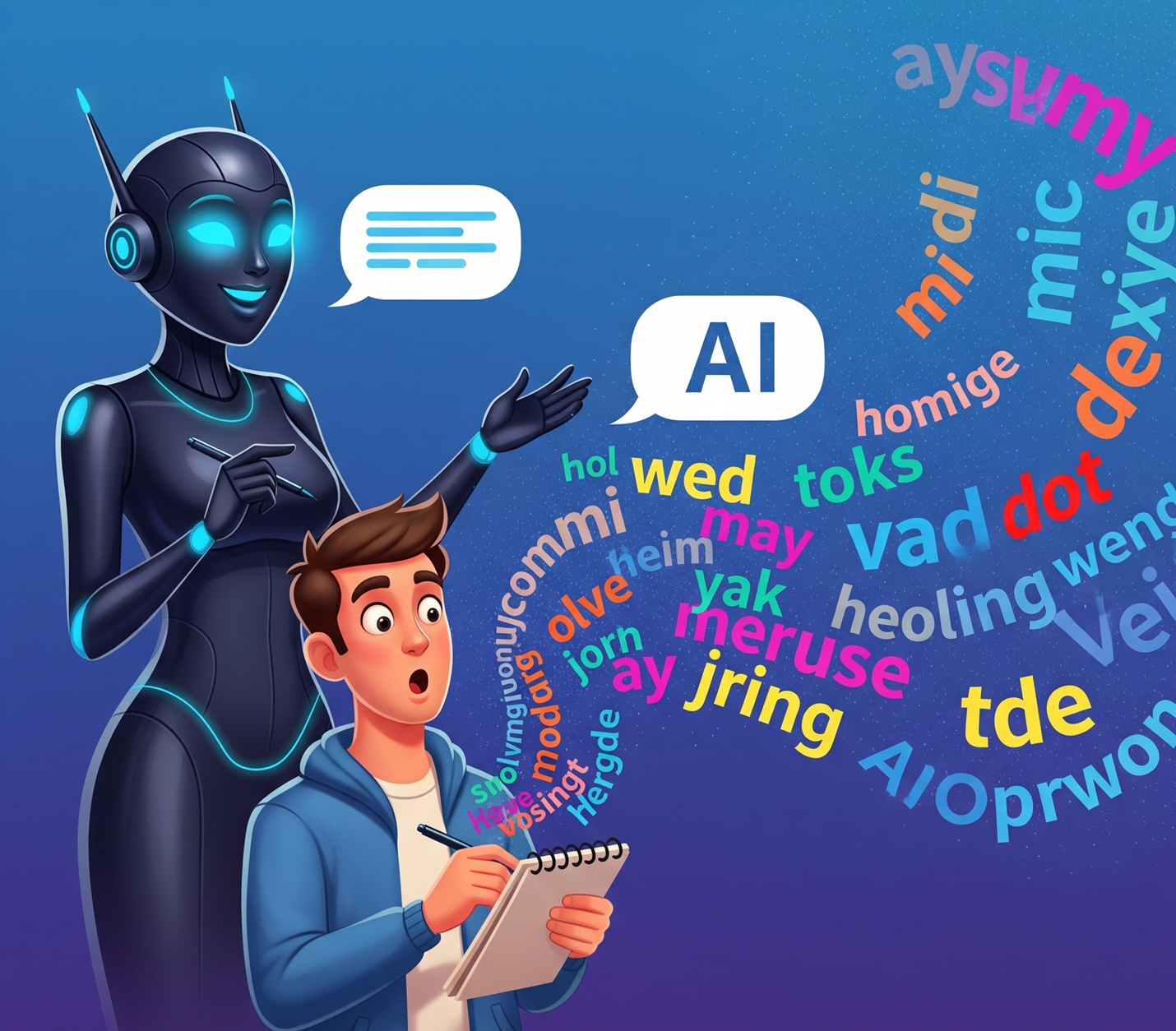Artificial intelligence (AI) is rapidly changing our world, from the apps on our phones to how we shop online. AI is getting smarter, and a big part of this is the development of autonomous AI agents. These are AI systems that don’t just follow instructions; they can think, plan, and act on their own to achieve goals. This advancement is pushing the boundaries of AI capabilities, bringing us closer to the concept of artificial general intelligence (AGI).
One of the newest examples of this is Manus AI, an AI agent developed by Monica, a Chinese AI startup that’s generating a lot of excitement. It’s being talked about as a potential breakthrough in AI and a significant player in China’s AI ecosystem. This article will explain what Manus AI is, how it functions, what it can do, and how it compares to other AI systems in the realm of AI automation.
Key Takeaways
- Manus AI is a new type of AI, called an autonomous agent, designed to handle complex tasks on its own, showcasing advancements in self-directed AI.
- It uses a special design and can work with different kinds of information, employing multi-modal processing and connecting to other tools to do its job.
- Early tests, including performance on the GAIA benchmark, show it can perform well, but there are questions about how reliable it is and how much of its technology is really new.
- Autonomous AI like Manus AI could change many industries by automating tasks and improving efficiency, potentially revolutionizing workflow automation and AI-powered productivity.
Understanding Autonomous AI Agents

To understand Manus AI, you first need to know about autonomous AI agents.
What are Autonomous AI Agents?
Simply put, autonomous AI agents are AI systems that can perform tasks without needing constant direction from a person. Unlike regular software that just follows rules, these agents can understand their environment, make decisions, and take actions to reach a goal. They can even learn from what they do and change how they act over time, showcasing a level of autonomous execution that brings us closer to AGI automation.
Think of it this way: a chatbot can answer your questions. An autonomous agent can answer your questions and take steps to solve a problem for you, like booking a trip or ordering groceries, demonstrating real-world problem-solving capabilities.
How do Autonomous AI Agents Work?
Here’s a breakdown of how they generally work:
- Perception: The agent gathers information from its surroundings (the internet, databases, sensors, etc.).
- Decision-Making: It uses the information to make choices based on what it’s trying to achieve.
- Action Execution: It carries out actions to reach its goals, showcasing autonomous execution.
- Learning and Adaptation: The agent improves over time based on feedback and new information.
There are different kinds of autonomous agents, from simple ones that react to their environment to complex ones that can plan and strategize. Some are designed for specific jobs, while others, like Manus AI, are made to be more general-purpose. These agents are defined by their ability to act independently (autonomy), respond to changes (reactivity), take initiative (proactiveness), and adapt to new situations (adaptability).
Manus AI: A New Kind of Autonomous AI

Manus AI is a new AI agent created by Monica, a Chinese AI startup. The name “Manus” comes from the Latin word for “hand,” symbolizing its ability to turn ideas into reality. It’s being called the “first truly autonomous AI” that can handle complex tasks on its own and deliver real results, pushing the boundaries of self-directed AI.
What is Manus AI?
Manus AI is designed to move beyond simply thinking to actually doing. It’s described as an “autonomous AI,” meaning it can handle complex tasks on its own. It can do things like plan trips, analyze data, create content (like videos), compare options, research, organize information, and provide insights. To do this, it uses a complex design, works with different types of information (text, images, code) through multi-modal processing, connects to other tools, and learns from experience.
What can Manus AI do?
Manus AI can perform a variety of tasks without much human help, showcasing its capabilities in task automation and workflow automation. For example, it can create detailed travel plans, analyze stock market data, make educational videos, compare insurance policies, find suppliers for businesses, organize data, and analyze sales data to suggest improvements. It can also generate blog content, create reports, help with writing, plan trips, research history, write summaries, analyze real estate, and even create simple video games or copy websites.
How Well Does Manus AI Perform?
Manus AI’s performance has been evaluated using benchmarks like the GAIA (Generalized AI Agent) benchmark, where it reportedly achieved strong results across basic (86.5%), intermediate (70.1%), and complex (57.7%) tasks, outperforming OpenAI’s Deep Research. This performance on the GAIA benchmark demonstrates its capabilities in autonomous execution and real-world problem-solving.
Comparisons with systems like OpenAI’s GPT-4 highlight Manus AI’s focus on autonomous task execution, while OpenAI’s models are primarily language-based. This suggests Manus AI is making strides in autonomous capabilities, though OpenAI maintains a strong presence across various AI applications.
Manus AI vs. Other AI Systems

When compared to AI systems from OpenAI, such as GPT-4, Manus AI is designed to independently execute entire tasks, while OpenAI’s models are mainly focused on generating text and assisting with tasks. Some comparisons suggest that Manus AI might be more advanced and faster than OpenAI’s Operator for autonomous tasks.
The emergence of Manus AI has also led to comparisons with DeepSeek, with many in the tech community referring to it as “China’s second DeepSeek moment,” highlighting the rapid advancements in AI coming from China. Notably, Manus AI is built upon existing models like Anthropic’s Claude 3.5 and leverages Alibaba Cloud for its cloud-based asynchronous operation, indicating a strategic leveraging of established technologies.
Early Reactions to Manus AI
The launch of Manus AI created a lot of excitement. There was so much demand that a long waitlist formed to get access, and some people even sold their access online. Some early users and experts had positive first impressions, praising its potential to complete tasks autonomously and its contributions to AI-powered productivity.
However, there has also been skepticism and reports of problems from early testers. Some users reported frequent crashes, endless loops, and failures even with simple tasks, raising concerns about its reliability. There have also been questions about how original its technology is, with some suggesting it relies heavily on existing models. Issues like the suspension of its social media account and limitations reported by beta users have also led to increased scrutiny. Some early reviews suggested that Manus AI might be overhyped and not performing as expected.
In response to some of these challenges, Manus AI has partnered with Alibaba’s Qwen team, which is seen as an effort to improve the platform’s stability and handle the high demand. There have also been reports of support from the Chinese government, further solidifying its position in China’s AI ecosystem. Overall, the reaction to Manus AI has been a mix of excitement and caution, as the platform works to overcome technical problems and prove its value.
Getting Started with Manus AI
Currently, Manus AI is available through an invitation-only beta program. To try to get access, you usually need to visit the Manus AI website and apply. You might need to sign in and fill out a form explaining how you plan to use it. Because there’s high demand, there’s usually a waitlist, and it might take a while to get an invitation. Once you get an invitation code, you can activate your account and start using the features. Keep in mind that as a beta product, it might have some limitations and could change as it’s developed.
The Future of Autonomous AI

Manus AI is an exciting development in autonomous AI agents. Its ability to perform many tasks independently shows a big step forward in AI. This kind of technology has the potential to change industries and make us more productive through advanced task automation and workflow automation.
However, Manus AI is still in its early stages and faces challenges. It needs to improve its reliability and stability, and address questions about its technology. The market’s reaction has been mixed, and it needs to overcome these challenges to be widely adopted. Additionally, as with any advanced AI system, issues of regulatory compliance and data privacy need to be carefully addressed.
Despite these challenges, Manus AI represents a clear trend towards more autonomous AI systems. These systems could handle complex tasks with less human intervention, changing how we use technology and work in different fields. As we move closer to artificial general intelligence, the potential for AI-powered productivity and real-world problem-solving continues to grow.
Conclusion
Manus AI represents a notable advancement in autonomous AI, demonstrating potential to transform industries through enhanced automation and efficiency. While challenges concerning reliability, stability, and originality persist, its development highlights a trend toward more capable AI systems. Continued progress in this area promises to reshape human-technology interaction across various sectors, pushing the boundaries of what’s possible in AI leadership and autonomous execution.
Frequently Asked Questions (FAQs)
What is Autonomous AI?
Autonomous AI refers to artificial intelligence systems that can perform tasks independently, without needing constant human direction. They can understand their environment, make decisions, and take actions to achieve specific goals, learning and adapting over time.
How is Autonomous AI Different from Traditional AI?
Traditional AI typically follows a fixed set of rules or responds to specific commands. Autonomous AI, on the other hand, can perceive its environment, make decisions, and execute actions to achieve a goal, demonstrating a higher level of independence and adaptability.
What is Manus AI?
Manus AI is an autonomous AI agent developed by Monica, a Chinese AI startup. It is designed to handle complex tasks independently, bridging the gap between thought and action to deliver tangible results.
What are the Key Capabilities of Manus AI?
Manus AI offers a range of core functionalities, including task completion, information integration, in-depth data analysis, content generation, comparative analysis, research and sourcing, data organization, and insight generation from uploaded data.
What are the Key Features of Manus AI?
Key features of Manus AI include its multi-agent architecture, multi-modal processing capabilities, advanced tool integration, adaptive learning, cloud-based asynchronous operation, and a unique “Manus’s Computer” interface. It also leverages existing AI models like Anthropic’s Claude 3.5 and Alibaba Cloud services.
What are Some Potential Applications of Manus AI?
Manus AI has potential applications across various industries, including business process automation, data analysis and visualization, software development, content creation, research, e-commerce, finance, healthcare, logistics, education, travel planning, and human resources. It can also be applied in creative domains like game development and real estate.
How Does Manus AI Perform Compared to Other AI Systems?
Manus AI has been evaluated using benchmarks like GAIA, demonstrating strong performance, even outperforming OpenAI’s Deep Research in some areas. It is designed as an autonomous agent, distinguishing it from language models like GPT-4.
What are the Concerns and Challenges Related to Manus AI?
Concerns and challenges related to Manus AI include questions about its reliability, the originality of its technology, and reports of issues from early testers, such as frequent crashes and failures. Additionally, as with any advanced AI system, regulatory compliance and data privacy are important considerations.
How Can I Get Access to Manus AI?
Currently, access to Manus AI is through an invitation-only beta program. Interested users typically need to apply through the official Manus AI website, which may involve joining a waitlist.
What is the Future Potential of Autonomous AI like Manus AI?
Autonomous AI like Manus AI has the potential to transform various industries by automating complex tasks and improving efficiency. It represents a trend towards AI systems that can operate with increasing independence, potentially reshaping how we interact with technology and conduct our work. As we move closer to artificial general intelligence, the possibilities for AI-powered productivity and real-world problem-solving continue to expand.
Articles referenced:
The Evolution of AI: Introducing Autonomous AI Agents – Shelf
Manus AI Claims Autonomous Agent Capabilities
The next DeepSeek? Startup Manus becomes China’s latest AI darling | KrASIA
Manus AI: The Best Autonomous AI Agent Redefining Automation and Productivity
China’s Manus AI ‘agent’ could be our 1st glimpse at artificial general intelligence | Live Science
Manus AI: Features, Architecture, Access, Early Issues & More | DataCamp
AI Agent Developer Manus Gains Support of Chinese Government | PYMNTS.com
Manus AI & Qwen: Redefining AI with Multi-Agent Systems
Manus AI takes centre stage in China’s growing AI scene | The Express Tribune





